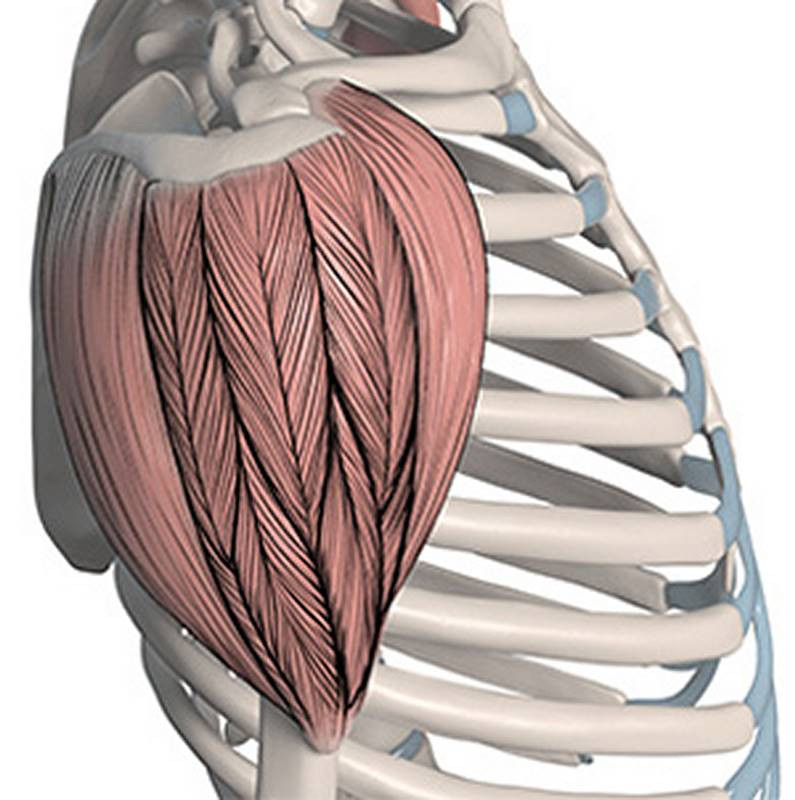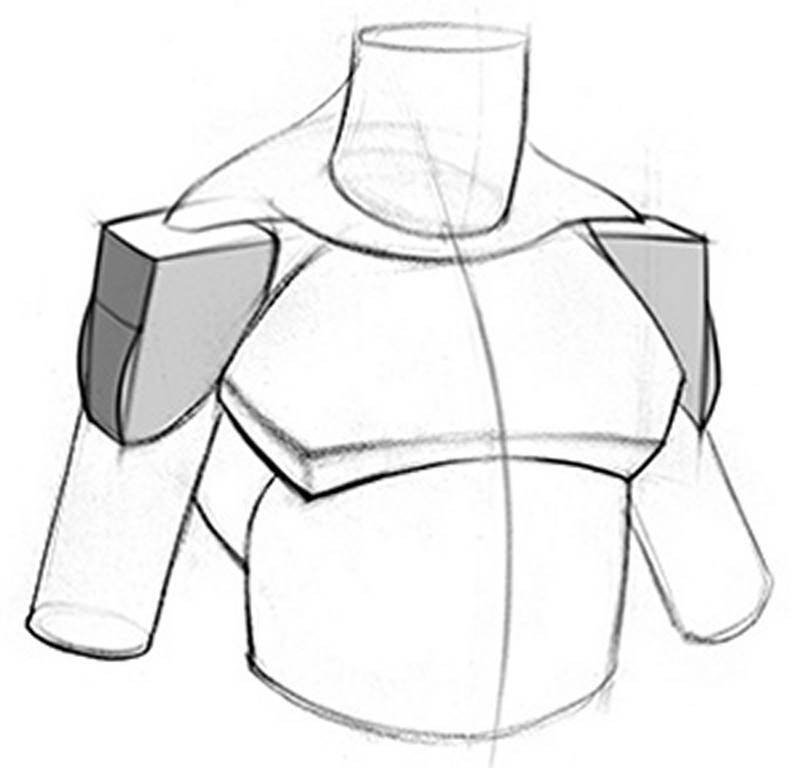It's time to learn how to draw the deltoid. The deltoid is the large shoulder muscle on your upper arm. Many beginning artists draw it round or spherical and end up with bubblemen instead of musclemen. Another common mistake is drawing it too short. In this lesson I'll walk you through everything you need to know so you can draw it accurately, confidently, and dynamically.
The name tells us a little about the shape. Deltoid comes from "delta," the Greek letter, because it looks like an upside-down triangle. It's helpful to think of the deltoid as a triangle, or even better, a pyramid.


But you could also call the deltoid Cerberus, because it's a three-headed beast. Like the dog... Anyway, the deltoid has three heads, one on the front, side, and back. So the deltoid completely cups the shoulder joint and is able to move the arm in many different directions
Origin
Each muscle head originates in a continuous line on different sides of the shoulder girdle.
The Anterior head comes from the clavicle. It originates on the lateral third, starting here at the dip in the S curve. The Lateral head comes from the acromion, from the rectangular bone's front, side, and back planes.
Finally, the Posterior head originates on the spine of the scapula, like the trapezius. But while the trapezius attaches to the top plane, the deltoid attaches to the bottom plane.
The backplane is subcutaneous and usually visible on the surface, which is why the spine of the scapula is such a great landmark when tracking these muscles.

Insertion
The deltoid inserts halfway down the humerus, on the outside of the bone. There's a little bump for the deltoid to attach to called the deltoid tuberosity. This insertion isn't right in the middle of the muscle, but a little towards the front of the arm. This asymmetry gives the entire deltoid a dynamic curve, since its fibers have to swing around the arm to insert.
I want to explain a few details about each of the 3 heads. Let's start at the front.
Anterior Head
The anterior head is the shortest of them all. It has an oval or teardrop form. Sometimes, on really lean people, it can look like it's split in two. Its bottom half runs side-by-side with the pectoralis major. They're separated at the clavicle by this little gap, called the infraclavicular fossa.
You'll usually see a curved rhythm from the armpit, between the pecs and deltoid. This is caused by the plane change from the front plane of the deltoid to the roundness of the chest.


Lateral Head
The lateral head is very clearly divided from the anterior head. It's the biggest section and the most complex. It descends the lowest on the arm, so the other heads tuck underneath it.
While the anterior and posterior heads are simple parallel muscles, the lateral head is a multipennate muscle. This means it has multiple tendons, braiding the muscle fibers into a complex pattern. While it's rare to actually see deltoid muscle fiber on a real human being, this does create some crazy bumps on the surface, so pay attention.

Muscles vary between individuals a lot more than bones do, so you'll see all kinds of crazy variations depending on placement of the tendons, which striations are visible, and which parts are developed more. If you're drawing a muscular shoulder keep an eye out for the three at the top and four below, but don't expect it to be obvious.
Posterior Head
Unlike the obvious division between the anterior and lateral heads, the transition between the lateral and posterior heads tends to be smooth. The posterior head has a similar teardrop shape to the anterior head, but it's wider, and definitely flatter. Remember how the muscle fibers attach to the spine of the scapula with the tendon?

This creates a large flat zone between the muscle belly and its origin. The tendon stays flat, no matter how developed the muscle is. So, when the muscle belly is bulging, it can look like it's floating. Keep an eye out for that, but otherwise, the posterior head is really simple.
Notice the differences between the heads. Even the lateral head isn't symmetrical, because it has to curve forwards to the insertion point. The deltoid is not a symmetrical muscle. When you're drawing a pose, pay attention to which head is flexing and where the thickest and thinnest areas are. This asymmetry will add life and movement to your figures

Form
When you put it all together, the deltoid is like an upside-down pyramid. It's big and boxy on top of the shoulder girdle, but then tapers down the arm. Its thickest point is actually right below its center.
This makes the bottom half of the deltoid full and rounded, while the top half looks straighter.
As I mentioned, you usually won't see all the bananas on most people. Just subtle hints of them.
But, when you're drawing someone with insane deltoids, or inventing super heroes, try to design the digitation with gesture in mind. The gesture and shape design is more important than adding all 3 digits on top and all 4 on bottom. Don't make it look too symmetrical or too busy and distracting.

All that said, don't get so wrapped up in anatomy that you forget your basic drawing skills. You want to keep the perspective of the shoulder girdle in mind as you draw.
It might be helpful for you to think of the deltoid as a box sitting on top of the round rib cage. Its front, side, and back planes are distinct and boxy along the shoulder girdle, and then the deltoid tapers to halfway down to the humerus. Once you've got the big structure down, you can add details like the individual heads.
Look out for the split between the anterior and lateral heads, and the multipennate structure of the lateral head. Use perspective to add structure and asymmetry to add gesture. Anatomy is more than a muscle map.
Function
In the premium version of this lesson, I’ll teach you the function and motion of the deltoids, along with more juicy details about the forms and anatomy.
Assignment: Draw the Deltoids
Your assignment is to do quicksketch drawings of the deltoid from the model photos I’ve provided in the description below. Since we haven’t learned about the other arm muscles, just keep them as simple gestural curves, or simple cylinders. You should also include a bit of the torso, since the deltoid originates at the shoulder girdle. Don’t get too crazy with it though. Keep the focus on the deltoid. Get the gesture, major planes, then the anatomical details important to that pose.
